14. The Burmese Harp (Kon Ichikawa)
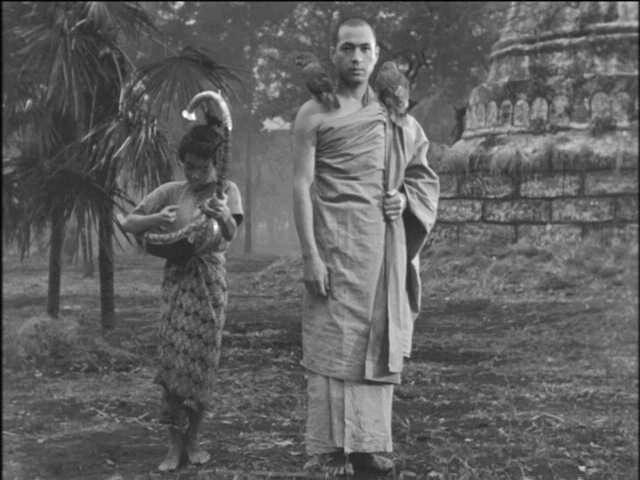
During the last days of World War II, a group of Japanese soldiers, who play their music to raise their morale, surrender to the British forces in Burma after they are informed that Japan has surrendered.
At a camp, the British captain asks from Mizushima, a private who plays the harp, to persuade a group of Japanese soldiers who are still fighting to surrender. However, through a number of unfortunate events, Mizushima ends up injured, receiving the help of a monk.
One day, he decides to dress up as a monk, stealing his savior’s clothes and shaving his head, in order not be recognized as a soldier. This act of self-preservation eventually transforms him esoterically, as he decides to tend to the hundreds of dead in the country.
Kon Ichikawa adapts the homonymous children’s novel by Michio Takeyama, in order to present an allegory about the lost identity of the Japanese nation, after their defeat in the war and the subsequent passing of the old empire.
The film is slow-paced and melancholic, although this general sense is frequently interrupted by the group’s music. In that aspect, “The Burmese Harp” occasionally functions as an unusual musical.
The movie features astonishing cinematography by Minoru Yokoyama, who presents images of extreme beauty, particularly in the natural environment.
13. Floating Weeds (Yasujiro Ozu, 1959)
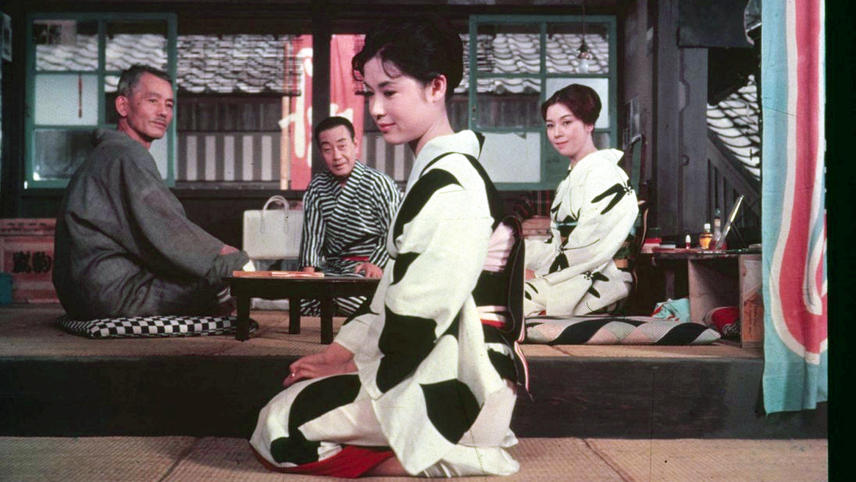
This film is a remake of Yasujiro Ozu’s own black-and-white silent film “A Story of Floating Weeds”, which was released in 1934.
A theatre troupe arrives in a seaside town on the Inland Sea. Komajuro, the owner, goes to meet Oyoshi, an old love of his. The two of them have a son together named Kiyoshi, who works at the local post office, but does not know that Komajuro is his father, thinking he is his uncle.
Sumiko, the lead actress of the troupe and Komajuro’s current mistress, becomes jealous, and follows Komajuro, in an action resulting in a series of events that end up with him breaking up with her. In order to exact revenge, she persuades one of the young actresses, Kayo, to seduce Komajuro.
Yasujiro Ozu directs a true triumph of realism, as the film’s rhythm mirrors the actual life of the members of a theatrical troupe, with no dramatic outbursts of any kind. He focuses on intimacies rather than passion, as exemplified by scenes between father and son, between former lovers, and among the members of the troupe.
His distinct style of shooting is present once more with the camera placed three feet above the floor (the eye level of a Japanese person seated on a tatami mat) and never actually moving, in order to make the audience feel as if they are actually participating in the film, thus becoming more receptive of the characters.
12. Enjo (Kon Ichikawa, 1958)
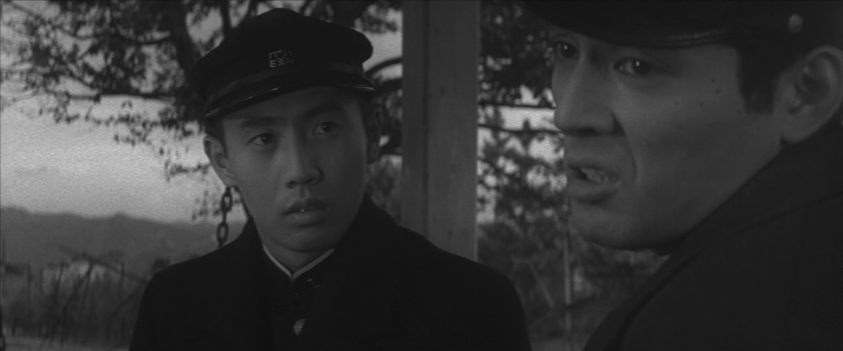
The film is adapted from Yukio Mishima’s novel “The Temple of the Golden Pavilion”, which was inspired from the burning of Kinkaku-ji in Kyoto by a young Buddhist acolyte in 1950. The event shocked Japan at the time, since the Golden Pavilion was built before 1400.
The story revolves around Goichi, a young Buddhist acolyte, who is tormented by his abusive mother’s infidelity, and the sudden death of his father. As he arrives at the Golden Pavilion for further studies, he is additionally burdened by his father’s notion that the building is the most beautiful in Japan, by his mother’s wish for him to become the head of the temple, and by the sinful nature of the head priest.
Kon Ichikawa narrates the story in flashbacks, as he presents the inevitable downfall of a young man whose innocence has doomed him forever. His despair, upon realizing the truth about people and religion and his harsh family background, are the reasons that finally make him resort to vandalism.
The movie features wonderful cinematography by Kazuo Miyagawa, who used traditional static style in order to give a claustrophobic feel to the film, as Goichi appears trapped by the setting itself.
11. Gate of Hell (Teinosuke Kinugasa, 1953)
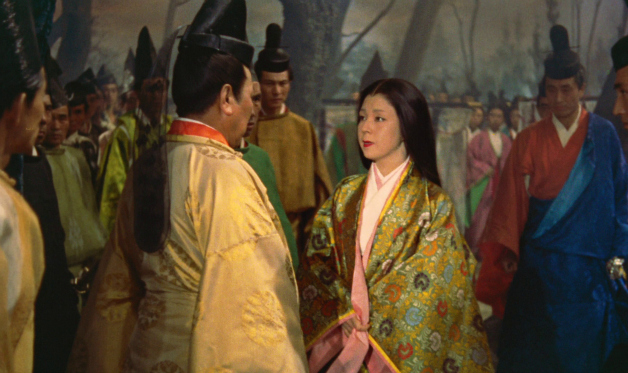
“Gate of Hell” was one of the landmarks of the decade for a number of reasons. Using Eastmancolor, it was Daiei Film’s first color film and the first Japanese color film to be released outside of Japan. It won Oscars for Best Foreign Language Film and Best Costume Design, the Palme d’Or at the 1954 Cannes Film Festival, and the Golden Leopard at the Locarno International Film Festival.
The script is based on a theatrical play by Kan Kikuchi and takes place in 1159. During a coup d’etat, Morito, an imperial warrior, falls for a lady-in-waiting named Kesa, who is married to Wataru. Morito decides to kill him and asks for Kesa’s help in doing so.
Teinosuke Kinugasa directed a psychological thriller filled with intrigue, tragedy, and passion. However, the film’s biggest assets lie in the technical department, as it features sublime cinematography, costumes, and set designs. In particular, the opening battle scenes, the horse race, and the final confrontation are so elaborate that they still look stunning, even after all these years.
10. Life of Oharu (Kenji Mizoguchi, 1952)
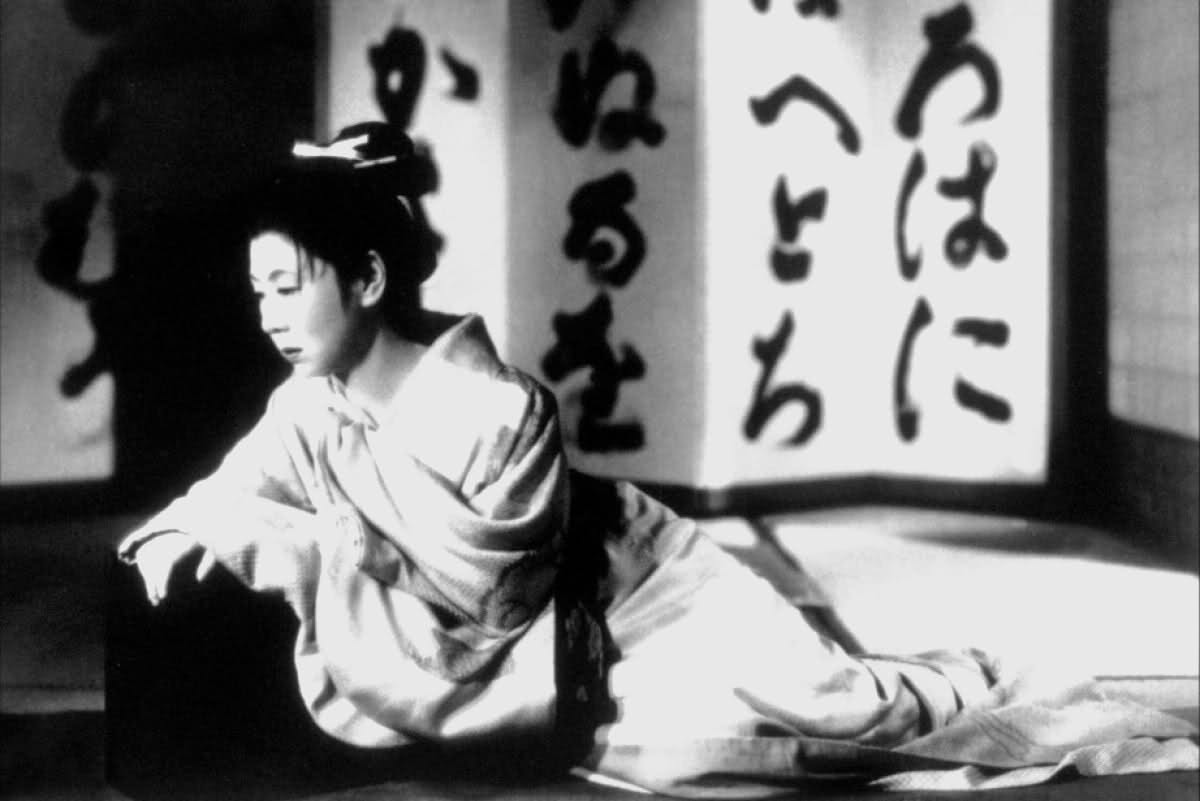
One of the greatest creations from Kenji Mizoguchi, “Life of Oharu” won the International Prize at the 1952 Venice International Film Festival and was nominated for a Golden Lion.
Oharu is a lady in waiting at the court, until she falls in love with a young page. The two of them spend the night at an inn, but as their relationship was forbidden, he is sentenced to death, and she, along with her family, are banished, thus beginning her never-ending downward spiral toward tragedy.
In their exile, her father, who is deeply ashamed by her actions, prostitutes her, and she ends up as the mistress of a local lord, with a “mission” to bear him children. When she succeeds, she is once more returned to her house, where her father prostitutes her once more.
In one of the saddest films ever shot, Mizoguchi managed to avoid the reef of sentimentality, and subsequently, melodrama. Instead, he shot a film that makes a clear comment about women and their status in feudal Japan. Furthermore, he does not use pretentious climaxes to draw sentiment, as the drama chiefly arises from the fact that Oharu is misjudged by society and her family.
Kinuyo Tanaka gives a sublime performance as Oharu, and as her father, Ichiro Sugai manages to realistically portray a truly despicable human being.
9. Late Chrysanthemums (Mikio Naruse, 1954)
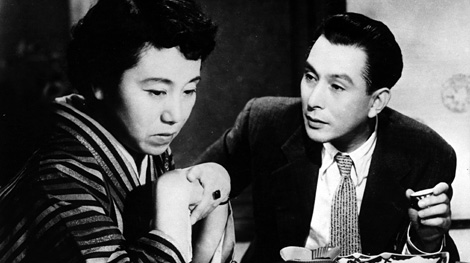
In one of his most accomplished films, Mikio Naruse combines three short stories by female author Fumiko Hayashi, regarding three ex-geishas.
Kin has kept most of the money she made as a geisha, and is now a moneylender. Her love for money is so extreme that when she is not going around making collections, she sits at home and counts them. However, she soon realizes that both men and her friends only associate with her to loan money.
Tamae works as a housekeeper in a hotel and is very anxious about her 24-year-old son, who still lives with her. Tomi also lives with them, but she is an alcoholic and a gambler. Both of them owe money to Kin.
Naruse retains a delicate balance between the comic and the dramatic, as it is presented through the hopelessness of all three women. However, his social comments are well hidden beneath the permeating realism, and are not revealed until the amazing climaxes.
Haruko Sugimura gives a wonderful performance as Kin, a woman who tries to balance her love for money and her calculating nature with the constant sense of loneliness she feels.
8. Ikiru (Akira Kurosawa, 1952)
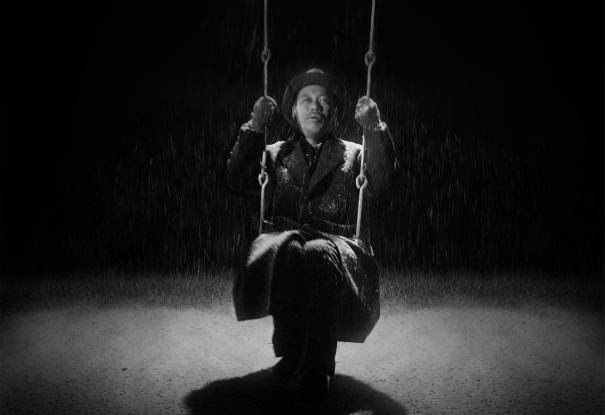
“Ikiru” is considered by many as one of the best films from Akira Kurosawa, particularly due to the humanism it emits and its harsh critique of bureaucracy.
The story focuses on a middle-aged public servant, the chief of the department of Public Cases, who has been doing the exact same job for more than 30 years, even receiving awards for the fact that he has not missed even one day of work. One day, he learns that he has stomach cancer, a disease that leaves him with only a year to live.
As he starts to examine his life, for the first time realizing its futility, he decides to find a purpose. After some time spent in Japan at night, first with an eccentric writer and then with an ex-colleague, he decides to dedicate the rest of his life to fulfilling the demands of a group of women, who want to transform an area that pollutes into a playground. In his efforts, he has to face the cruel mechanisms of bureaucracy.
Kurosawa makes an evident comment regarding bureaucracy and the people who constitute it, presenting them as truly despicable individuals. His second critique concerns the postwar generation, which, affected by the newly discovered Western civilization, has lost every connection with their roots and traditional Japanese values.
“Ikiru” was the first film where Kurosawa decided to do his own editing and the result was magnificent, with all the technical and aesthetic prowess of the film becoming evident in the final scene in the playground.